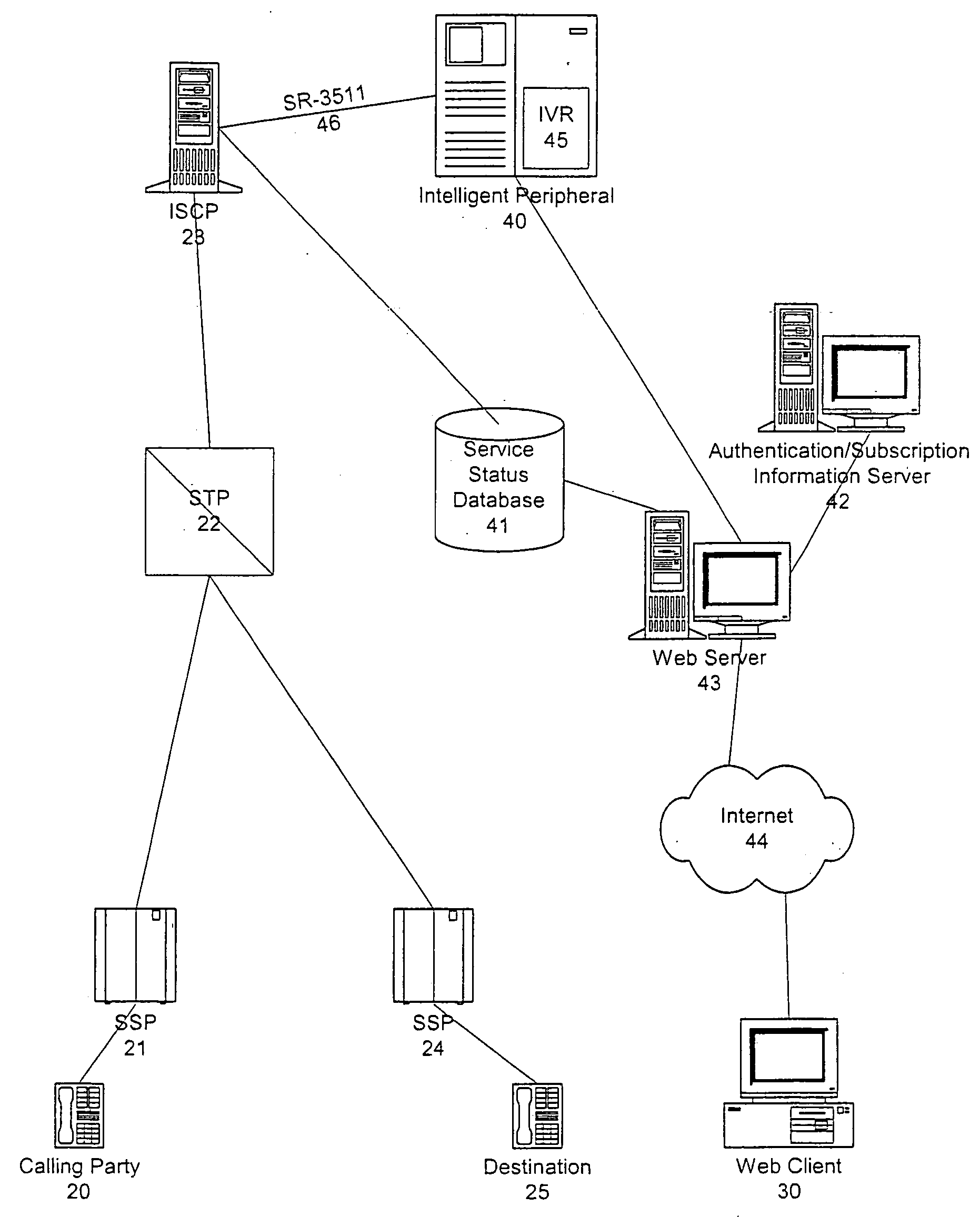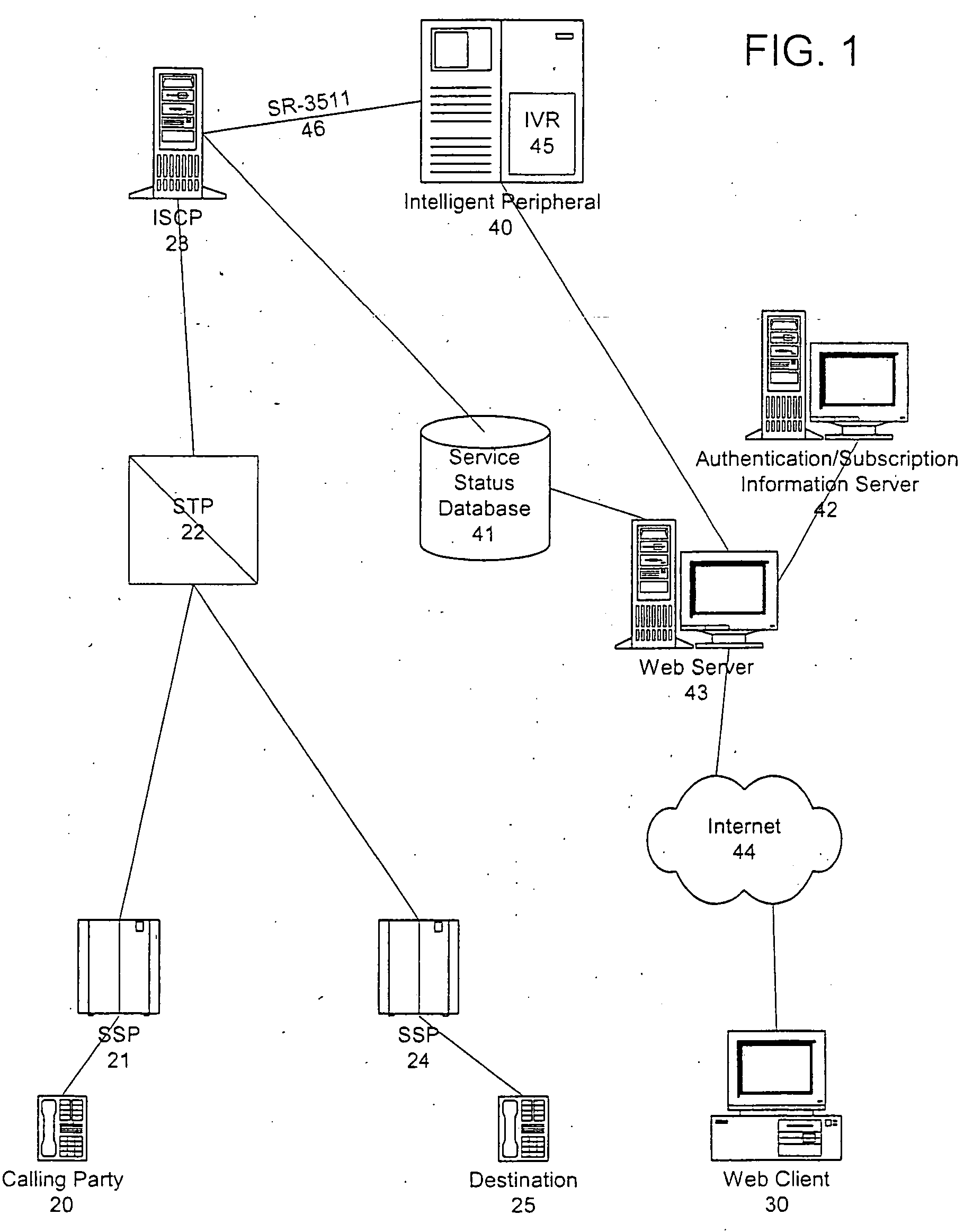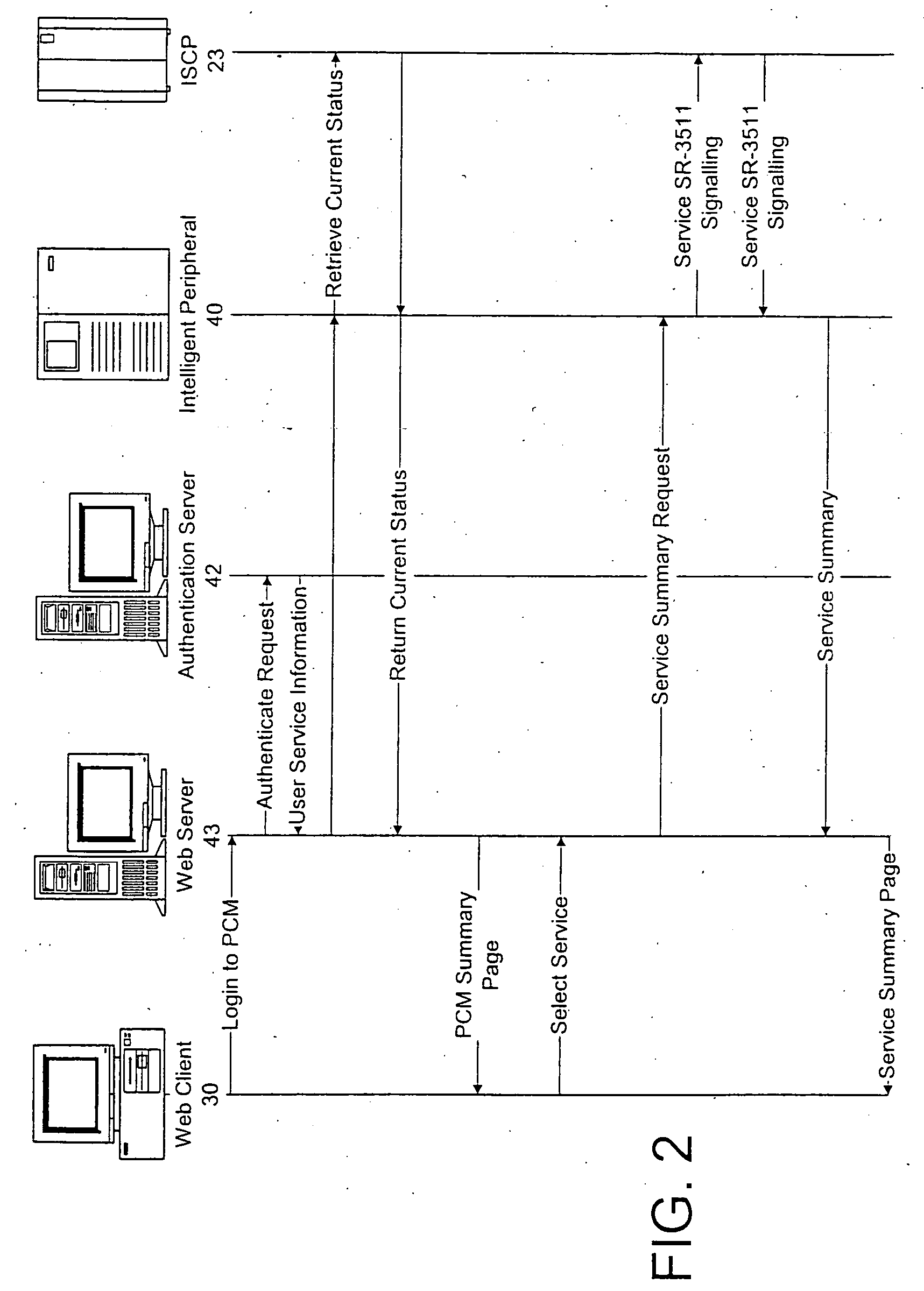System and method for providing remote access to telecommunications services
a technology for providing remote access and telecommunication services, applied in the field of telecommunications, can solve the problems of inability to ensure near real-time update of services, limited number and types of services that can be provided to and modified by subscribers, and incompatibility with existing ivr implementations
- Summary
- Abstract
- Description
- Claims
- Application Information
AI Technical Summary
Benefits of technology
Problems solved by technology
Method used
Image
Examples
Embodiment Construction
[0062] In view of the above, the present invention through one or more of its various aspects and / or embodiments is presented to accomplish one or more objectives and advantages, such as those noted below.
[0063] An aspect of the present invention provides a user / subscriber access to a PCM system through a communications network, including the Internet and other data networks, without excluding the possibility of conventional IVR access. Thus, the subscriber can conveniently customize services managed by the PCM through a graphical user interface (GUI) that efficiently presents the complex data associated with the managed services with minimal service provider interaction. Another aspect of the invention provides for updating the actual service data in the PSTN substantially contemporaneously with access to the service data via the PCM, permitting near real-time access to the services managed by the PCM.
[0064] In another aspect of the present invention, the PCM manages multiple ser...
PUM
 Login to View More
Login to View More Abstract
Description
Claims
Application Information
 Login to View More
Login to View More - R&D
- Intellectual Property
- Life Sciences
- Materials
- Tech Scout
- Unparalleled Data Quality
- Higher Quality Content
- 60% Fewer Hallucinations
Browse by: Latest US Patents, China's latest patents, Technical Efficacy Thesaurus, Application Domain, Technology Topic, Popular Technical Reports.
© 2025 PatSnap. All rights reserved.Legal|Privacy policy|Modern Slavery Act Transparency Statement|Sitemap|About US| Contact US: help@patsnap.com



